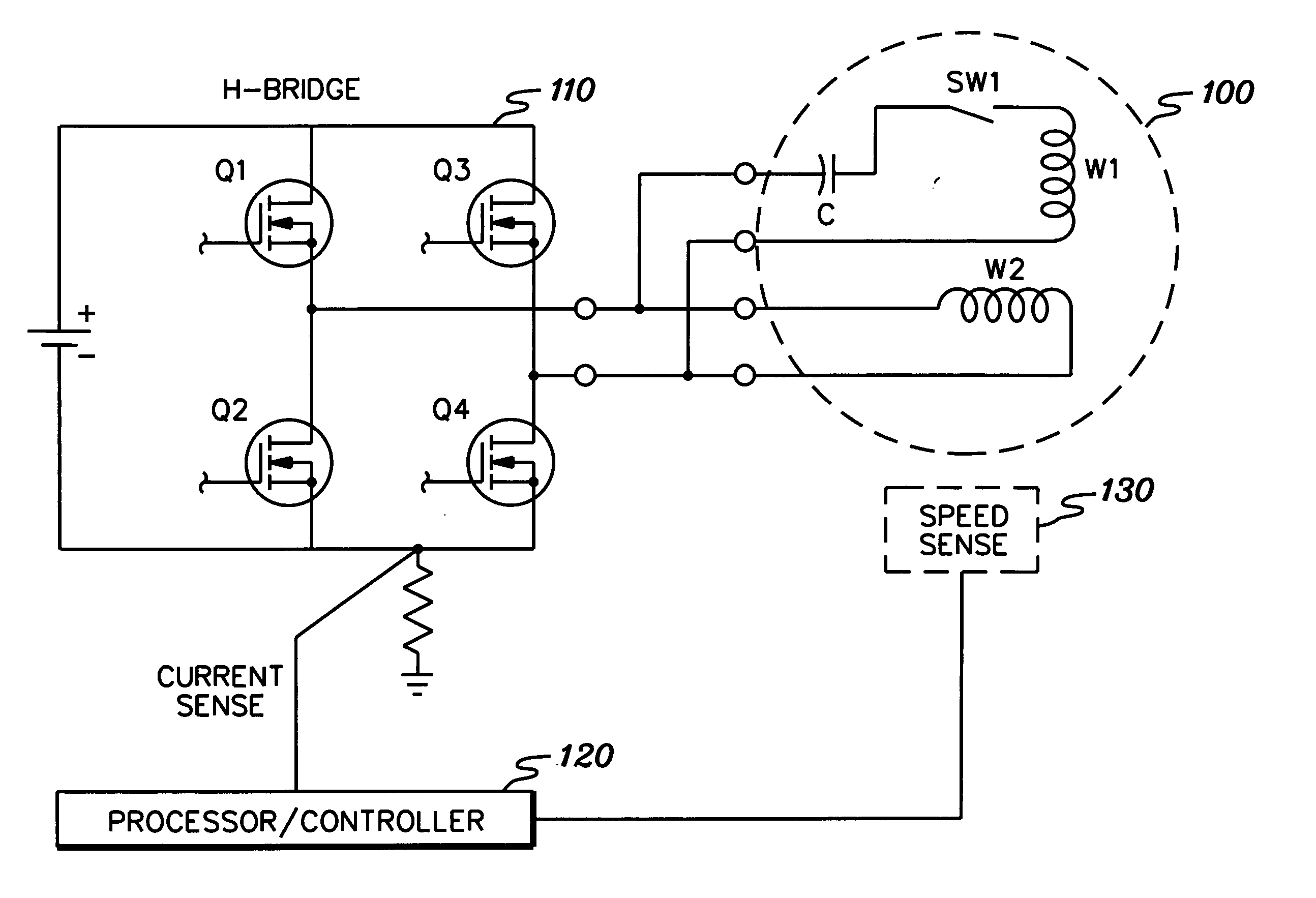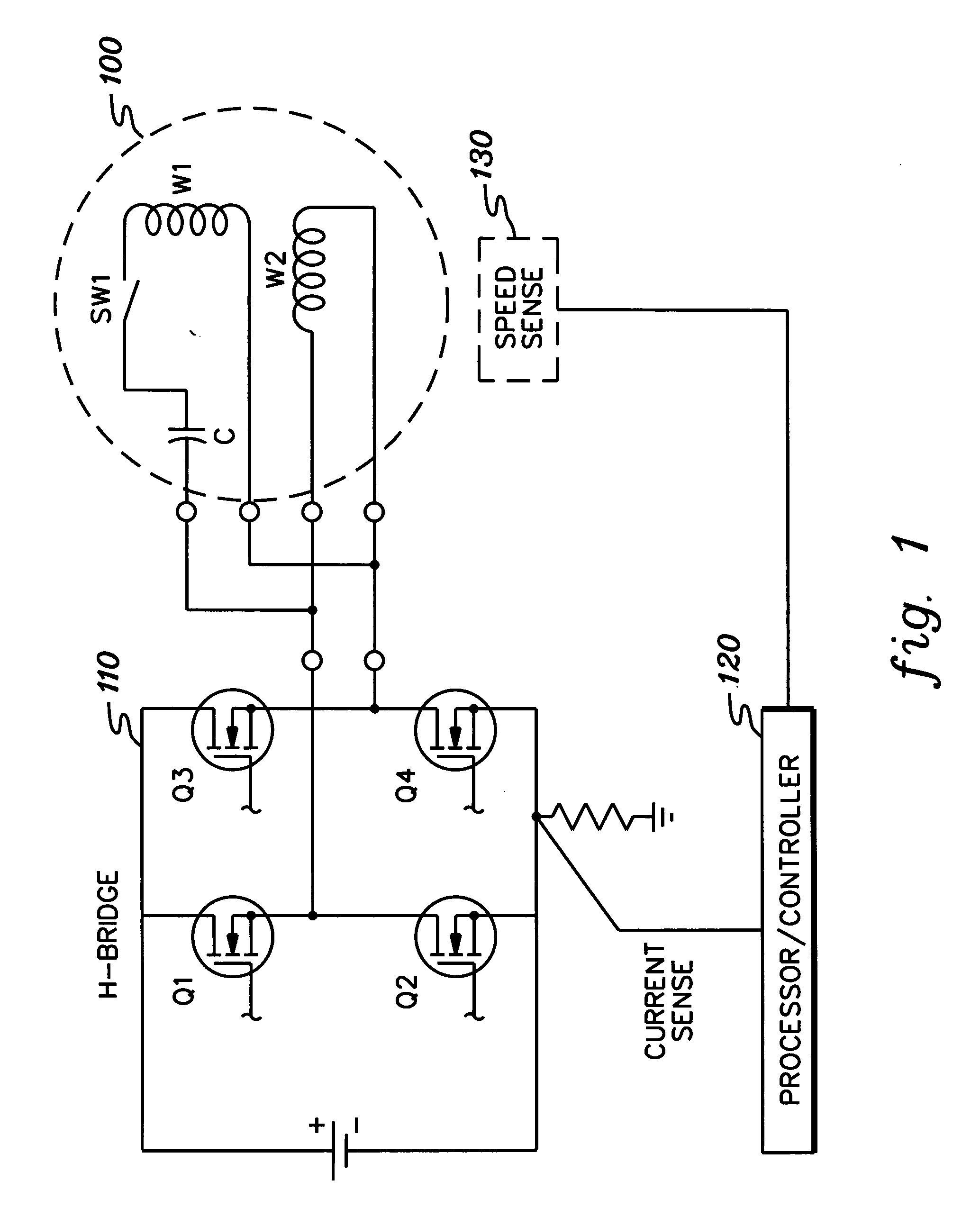Method, system and program product for controlling a single phase motor
a single-phase motor and control technology, applied in the direction of motor/generator/converter stopper, dynamo-electric converter control, multiple dynamo-motor starters, etc., can solve the problems of pwm carrier being dissipated, significant power loss, and inability to control the pwm carrier
- Summary
- Abstract
- Description
- Claims
- Application Information
AI Technical Summary
Benefits of technology
Problems solved by technology
Method used
Image
Examples
Embodiment Construction
[0015] Generally stated, provided herein is a control scheme for a single phase AC induction motor, which is particularly advantageous for startup or shutdown transitioning of the motor. The control scheme includes driving the single phase motor using a drive signal of a first mode, which comprises one of a square wave mode (i.e., a modified sine wave or quasi sine wave mode) and a pulse width modulation mode. Responsive to a motor change command, the motor drive signal is transitioned from the first mode to a second mode, wherein the second mode comprises the other of the square wave mode and the pulse width modulation mode. The transitioning commences after motor frequency reaches a first centrifugal switch limit for the motor. The first centrifugal switch limit is a lower centrifugal switch limit when the first mode comprises the square wave mode, and is an upper centrifugal switch limit when the first mode comprises the pulse width modulation mode. The transitioning includes emp...
PUM
 Login to View More
Login to View More Abstract
Description
Claims
Application Information
 Login to View More
Login to View More - R&D
- Intellectual Property
- Life Sciences
- Materials
- Tech Scout
- Unparalleled Data Quality
- Higher Quality Content
- 60% Fewer Hallucinations
Browse by: Latest US Patents, China's latest patents, Technical Efficacy Thesaurus, Application Domain, Technology Topic, Popular Technical Reports.
© 2025 PatSnap. All rights reserved.Legal|Privacy policy|Modern Slavery Act Transparency Statement|Sitemap|About US| Contact US: help@patsnap.com



